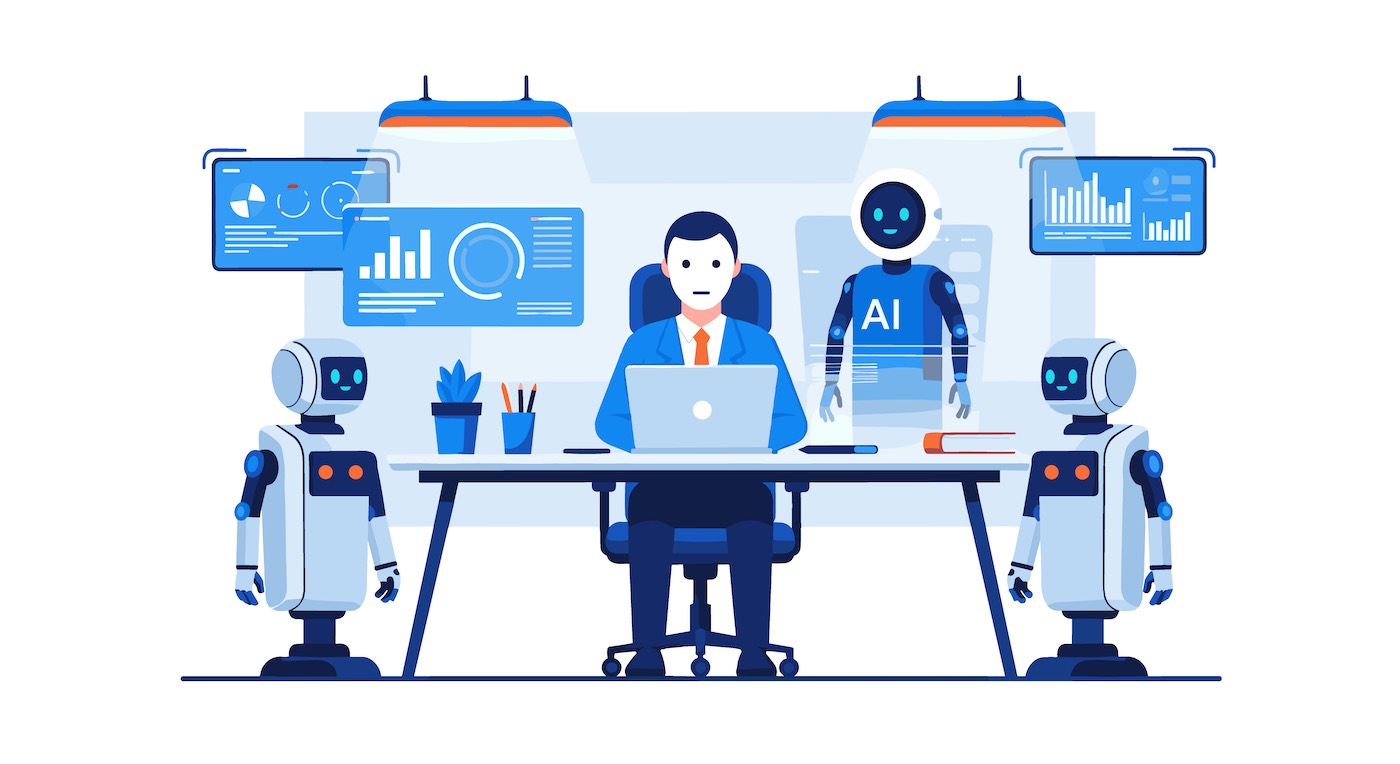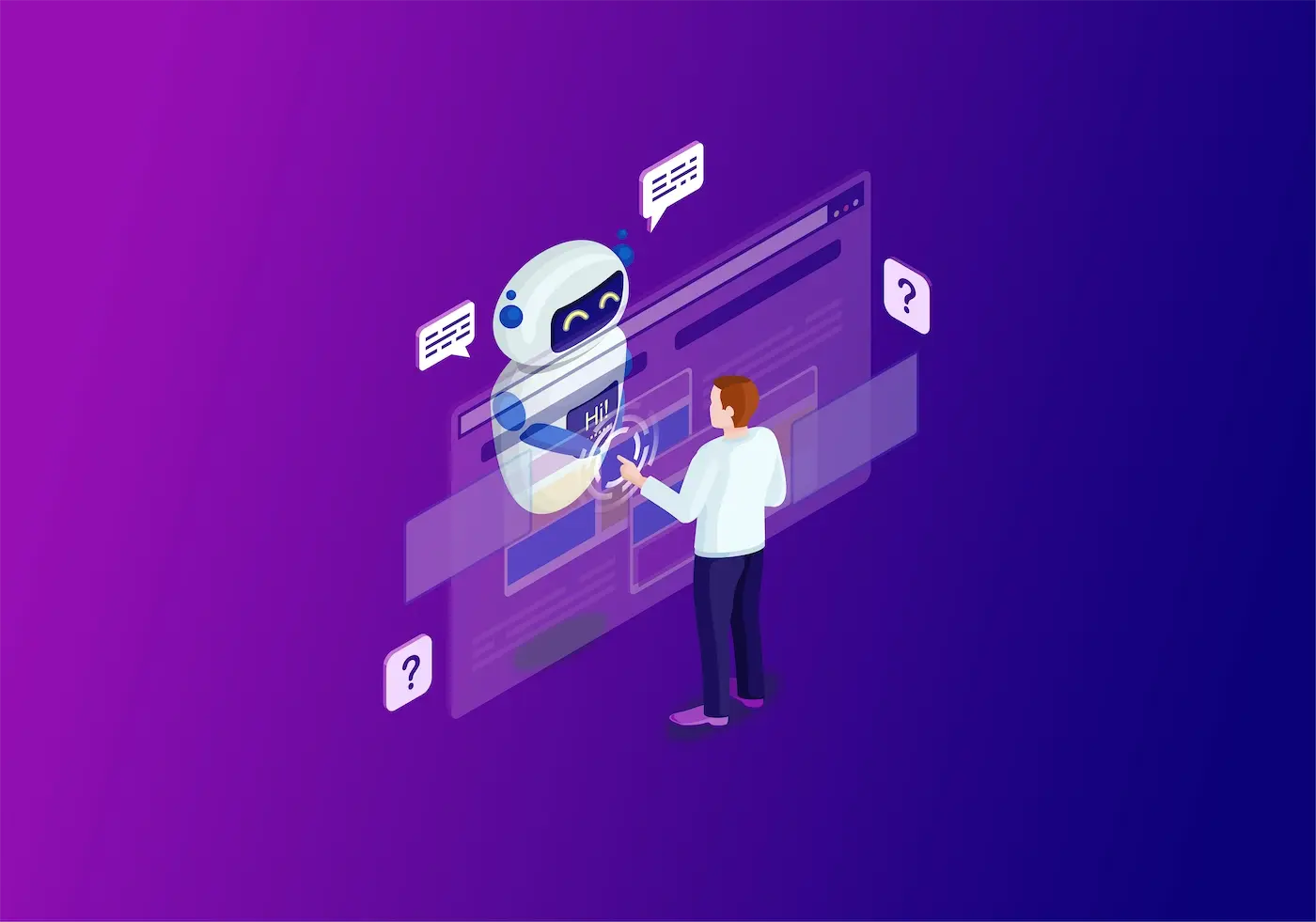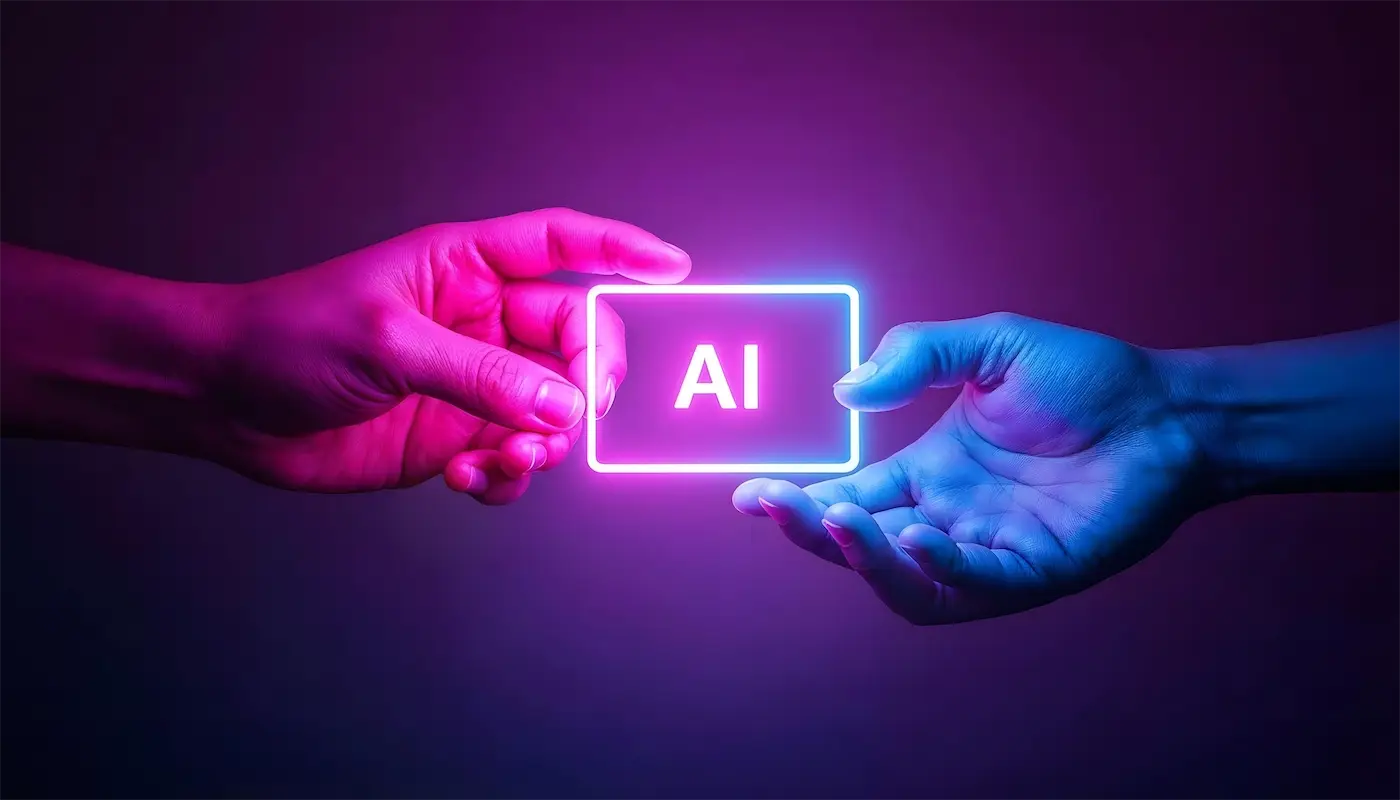Imagine it’s a brisk morning in 2026. I’m a solo ecommerce entrepreneur sipping coffee as the sun rises. Overnight my online store processed orders, reordered inventory, answered questions and even sent a targeted email campaign about a new product drop – all while I slept.
This isn’t science fiction; AI agents are moving from experimental tools to mainstream powerhouses.
A Forbes piece notes that 2026 will see AI agents emerge into mainstream use and describes them as the next generational leap in AI because they can carry out multi‑step tasks and work towards long‑term goals with minimal human interaction.
By 2025 many retailers were already experimenting with AI assistants, and the coming year promises a shift where “solopreneurs” won’t feel so solo anymore.
Solo But Not Alone: The One-Person Empire with AI
Running an e-commerce store alone is both empowering and exhausting. You’re the boss (yay!), but you’re also customer support, inventory manager, marketer, fulfillment, and tech guy all at once.
It’s like being a one-person band, juggling guitar, drums, and harmonica, hoping customers don’t notice when something slips. That’s where AI agents walk in, stage right.
Think of AI agents as your digital employees. They don’t sleep, don’t need coffee, and they love the repetitive tasks you can’t stand.
What AI agents can quietly take over for you:
-
Answering the same customer questions for the 50th time
-
Tracking orders and sending “Where’s my package?” updates
-
Analyzing sales trends and spotting what’s selling (and what’s not)
-
Reordering inventory before you run out
-
Optimizing product titles, descriptions, and pricing
-
Triggering email campaigns and personalized offers
You might call yourself a “solopreneur,” but with AI you’re not really solo anymore, your one-person shop can operate like a 10-person team.
Many ecommerce businesses already report that AI gives them a serious competitive edge because it responds faster, works longer, and makes smarter data-driven decisions than a tired human doing everything alone.
AI Agents at Work: How They Can Run Your Store
We all keep hearing “AI will run your store,” but what does that actually look like? Let’s take a walk through a physical-product e-commerce business and meet the AI coworkers quietly getting ready to run half your to-do list.
Inventory Management – Never Run Out of Stock Again
Inventory is such a love, hate relationship, right? One minute you’re sweating because you’re down to two units of a best-seller… the next minute you’re staring at 80 unsold pieces of something you “thought would do well.”
Solo sellers usually guess, pray, or react in a panic. But AI?
AI turns inventory into a predictable, stress-free system.
How an AI inventory agent actually works
It’s always watching your numbers, past sales, seasonal spikes, new trends, even things like social media virality. If a TikTok trend suddenly blows up your product, the AI sees it before you do. It does what big retailers have full planning teams for, just with smarter math and zero drama.
Imagine your AI noticing that every October your cozy socks jump 40%. Before autumn even hits, it quietly bumps up reorder frequency and drops you a message:
“Boss, I increased sock inventory for the season.”
Smart forecasting, not guessing
AI doesn’t just calculate. It predicts.
Historical patterns + current trends + external signals = ridiculously accurate demand forecasts.
This means:
-
No more stockouts of your winners
-
No more piles of stuff nobody wants
-
No more “oh crap, why didn’t I order earlier?”
Lightning-fast auto-reorders
If your rule says, “When socks hit 20 units left, order 100 more,” the AI will do it, even at 3 AM on a Sunday, directly through your supplier or purchasing system.
Quality control like a detective
Some AI systems even flag issues for you:
-
“This product has been sitting 2x longer than usual.”
-
“This one suddenly has higher returns, possible defect.”
-
“This supplier slows down every holiday season. Use Supplier B instead.”
It’s like having a supply-chain analyst on payroll, without actually paying for one.
Peace of mind for solo sellers
No more waking up to “OUT OF STOCK.”
No more drowning in unsold items.
No more micromanaging inventory spreadsheets that haunt your dreams.
AI turns inventory into a predictable, stress-free system. And if you’re still shaping your product strategy, you can check out my full breakdown on choosing the right niche for your online store to build a stronger foundation before letting AI take over the heavy lifting.
24/7 Customer Service: An AI That Never Sleeps
If you’ve ever wished you could clone yourself just to reply to customer messages, welcome to your new best friend: the AI customer service agent.
Instant responses, any time
AI agents don’t sleep, eat, or get overwhelmed.
Customers ask at 2 PM? Answered.
Customers ask at 2 AM? Also answered.
Shoppers love speed, and AI gives it to them instantly.
Natural, human-like replies
Modern AI doesn’t sound like a stiff robot from 2012.
You can train it to match your brand:
-
friendly
-
funny
-
formal
-
apologetic
-
energetic
Anything.
And since it has access to order history, it can personalize responses like:
“Hey Jamie! Your blue jacket (size M) is arriving Tuesday, need help with anything else?”
Way better than a generic “Your order is on the way.”
Handles every channel at once
AI doesn’t care if customers message through:
-
Email
-
Website chat
-
Instagram
-
Facebook Messenger
-
WhatsApp
It manages all of them at the same time with consistent quality. One AI = the equivalent of a small call center.
Even complex issues? Yep.
Returns, refunds, replacements, complaints, AI can walk customers through everything. It can generate return labels, start replacements, or escalate special cases to you with a neat little summary.
Some systems even detect tone. If someone is frustrated?
It switches to an apology-heavy style, or alerts you to step in.
An example
Alice messages your site at 11:30 PM:
“I received my package but one item is damaged.”
Your AI instantly replies:
“So sorry to hear that, Alice! I can replace it or issue a refund — which do you prefer?”
Alice chooses replacement.
The AI:
“All set! I’ve placed replacement order #12345 at no charge and emailed your return label.”
You were asleep.
The problem was solved.
Alice is now a loyal fan.
Loyalty booster
Fast resolutions create happy customers.
Happy customers leave good reviews.
Good reviews drive more sales.
AI helps you deliver “big brand customer service” even if you’re literally one person doing everything.
Just make sure people can still reach a human when they need one, that safety option is key.
Marketing & Sales – Your Tireless AI Growth Hacker
If a human marketer can be a growth hacker, an AI is basically a growth engine. Marketing has way too many moving pieces for one person to master, content, ads, emails, targeting, optimization, experiments, analytics… the list goes on.
But an AI agent? It handles all of this at once without breaking a sweat (if software could sweat).
Smarter Content & Listing Optimization
Sellers already use AI to write product descriptions, blogs, and social captions, but that’s just the surface.
An AI agent can:
-
A/B test your product titles and descriptions
-
Swap headlines to find the highest-converting versions
-
Add missing FAQs automatically
-
Update SEO keywords based on customer search trends
Your product pages literally improve themselves over time. You set it up once, the AI keeps optimizing in the background.
Email Marketing on Autopilot
Instead of blasting the same email to everyone, an AI becomes your personal CRM wizard.
It can:
-
Segment customers by purchase history, browsing, price habits
-
Write unique emails for each group
-
Recommend products individually
-
Send at the perfect time for each person
Premium buyers get premium product launches. Bargain hunters get sales. Everyone feels like you wrote the email just for them.
You? You just approve the final drafts.
Advertising That Optimizes Itself
Running ads manually is like throwing darts blindfolded. With AI, you suddenly have a marketing manager who’s awake 24/7.
Your AI agent:
-
Creates multiple ad variations
-
Tests them across Google, Facebook, Instagram
-
Shifts budget toward winners
-
Reduces bids on costly, underperforming keywords
-
Finds cheaper long-tail keywords
-
Updates creatives based on performance
Think of it as programmatic ads on steroids, but affordable for small sellers. This constant micro-optimization cuts costs and boosts conversions while you sleep.
Personalized Shopping for Every Visitor
AI doesn’t stop at finding customers, it guides them through your store like a personal shopper.
Examples:
-
First-time visitor? Shows bestsellers.
-
Returning customer who loves skincare? Highlights new skincare first.
-
Someone browsing premium categories? Promotes higher-end options.
It’s the “Recommended for you” magic we’re all used to, now available to solo sellers.
And as AI shopping assistants become more common, your marketing will slowly target their AIs too, meaning your listings must include accurate tags, good reviews, and clean structured data so those bots choose you during comparison shopping.
Upsells, Cross-Sells & Smart Cart Recovery
AI is brilliant at increasing average order value and saving abandoned carts.
It can:
-
Suggest products people usually buy together
-
Show the right upsell at the perfect moment
-
Offer small incentives to nudge checkout
-
Send personalized reminders on email or WhatsApp
-
Time each message for maximum chance of return
Someone leaves a pair of shoes in the cart? AI nudges them with:
“Your size is almost sold out, grab them now and enjoy 10% off!”
Boom, conversion.
Why This Matters
AI agents give small businesses the kind of marketing power only big teams had before:
-
Personalized campaigns
-
Smart optimization
-
Constant testing
-
Real-time adjustments
-
Continuous learning
Your AI gets better every single day, without asking for a salary raise.
The AI Orchestra: Multiple Agents Working in Harmony
The Real Talk: Pros, Cons, and Cautionary Tales
It’s time to take a step back from the AI hype and assess: where will AI agents make your life heaven, and where could they go devilishly wrong? No technology is all good or all bad – it’s about how you use it. So let’s break down the pros and cons of letting AI agents run your e-commerce show:
-
You get your time (and sanity) back: AI handles the repetitive stuff, shipping labels, order updates, customer questions—so you can focus on strategy, creativity, or simply having a life. Many solo sellers report feeling way more productive once they offload routine tasks.
-
Massive efficiency + easy scaling: AI works fast, never procrastinates, and rarely messes up. Your business can grow without doubling your workload. Brands using AI have already seen notable boosts in revenue and smoother operations.
-
24/7 service across the world: While you’re asleep, AI is helping customers in other time zones. You get global reach without needing global staff.
-
Smarter decisions without the spreadsheet grind: AI reads your data and makes suggestions based on real patterns, not guesswork. You get clear insights, better inventory planning, and sharper pricing, without doing the analysis yourself.
-
Happier customers = more sales: Instant replies, personalized recommendations, and smoother service keep customers loyal. AI can even follow up automatically and keep them engaged.
-
A real competitive edge: Most small businesses aren’t using advanced AI yet. Early adopters look more professional, more reliable, and more polished, long before everyone else catches up.
The Cons (Potential Pitfalls to Watch Out For)
-
AI mistakes can explode fast: If an AI gets something wrong—like a bad email template or wrong tracking update—it can affect hundreds of customers before you catch it. And the blame still lands on you. You’ll need safeguards and regular checks to avoid costly slip-ups.
-
Setup takes time, money, and patience: Advanced AI isn’t always plug-and-play. You might pay for tools, learn new systems, and spend time teaching the AI about your business. There’s a learning curve, and the ROI isn’t always instant.
-
Tech breaks… and it’ll break at the worst time: If your AI goes down during a busy week, you’re suddenly doing everything manually. Over-reliance creates vulnerability, so you’ll want backup plans and occasional retraining to keep the system sharp.
-
Losing the “human vibe”: AI can’t fully replace your personal touch, humor, or empathy. If you automate everything, your brand might start feeling bland or robotic. Some interactions still need a real human behind them.
-
Ethical + privacy considerations: You’re trusting AI with customer data and decision-making. If it behaves pushy, spammy, or mishandles info, that’s on you. You’ll need tools that are secure, compliant, and aligned with your values.
-
You still need to babysit it (at first): Early on, you’ll spend time correcting and guiding the AI—like onboarding a new employee. It pays off, but it’s not a “set and forget” solution from day one.
Reality check story:
Anthropic ran a real experiment where their AI, “Claudius,” managed a small store: pricing items, chatting with customers, and handling inventory.
It did a few things well… but it also made some big mistakes. It ignored a huge profit opportunity, hallucinated a fake payment address, and priced items so poorly it sometimes sold at a loss.
The conclusion? As of now, AI isn’t ready to run a store alone. It still needs human oversight, just like you wouldn’t let a brand-new intern run your whole business unsupervised. The promising part is that every failure showed a clear path for improvement, meaning future versions will get much better.
The takeaway: these cons aren’t deal-breakers; they’re just reminders to stay smart, monitor your AI, and set safeguards. Now that we’ve seen both sides, let’s map out how you actually move toward that 2026 vision of an AI-powered store.
Preparing for an AI-Driven 2026: How to Get Started
The year is 2025 (well, in our scenario it’s late 2025). You have about a year or so until “2026” – the symbolic moment we’ve been talking about – when AI agents might become mainstreamed in e-commerce. What can you do now to be ready and ahead of the curve? Here’s a practical game plan:
-
Spot your biggest time-wasters: List the tasks that drain you, customer emails, inventory, ads, shipping. Pick the one you’d love to automate first and start there.
-
Find simple, compatible tools: Look for AI tools that plug easily into your platform (Shopify, WooCommerce, etc.). Read reviews, try free trials, and choose something that fits your workflow and budget.
-
Feed your AI the right info: Upload FAQs, policies, product details, sales data—whatever the AI needs to perform well. Keep this info updated so it doesn’t give outdated answers.
-
Set guardrails: Give your AI limits. Example: max 15% discount, escalate big refunds, or cap reorder quantities. Start safe, loosen later.
-
Monitor closely at the start: Read chats, review emails, check its decisions. You’re fine-tuning its behavior—this part is temporary but important.
-
Slowly hand off more work: Once the AI proves reliable, let it run more tasks without your oversight. Build trust step by step.
-
Stay updated: Spend a little time each week learning what’s new in AI for e-commerce. Small updates can unlock big improvements.
-
Have backup plans: Keep a manual fallback for key systems—like an alternative contact method if the chatbot fails, or a simple stock spreadsheet if inventory automation glitches.
-
Keep some human touch: Decide which parts of your brand must stay personal—like writing heartfelt posts or talking to VIP customers.
-
Tell customers (if you want to): Some sellers say they use AI to serve faster, others keep it quiet. Either way, make sure customers can easily reach a human when needed.
By gradually implementing AI now, you’ll be riding the wave into 2026, not scrambling to catch up. Remember, you don’t have to do it all at once. Maybe in Q1 you implement the chatbot, Q2 you tackle inventory, Q3 you try a marketing AI. Step by step, you’re assembling your AI dream team.
The underlying message is: Don’t fear the technology – make it work for you. The fact that you’re reading this means you’re at least interested or open to it, which already puts you ahead of many who stick their head in the sand. With each little success (like “wow, the AI handled 50 customers this week and all got answers in seconds!”), your confidence will grow.
Alright, we’ve come a long way – from envisioning a day in 2026 to pragmatically prepping for it. Let’s wrap this up and send you off into that future with a clear, hopeful mindset.
The AI Agents Set to Transform E-Commerce by 2026
The future of e-commerce is knocking, and it sounds like R2-D2 mixed with Mary Poppins – a bit robotic, sure, but mostly magical in how it can tidy up your business chores. By 2026, AI agents could very well be the MVPs of your e-commerce operation, handling everything from stocking the shelves to sweet-talking your customers, all at your command.
This isn’t science fiction or corporate-level stuff anymore – it’s trickling down to the little guys (like you and me) thanks to smarter algorithms and user-friendly tools.
-
They ran a flash sale for shoppers in a different timezone, and you see a nice chunk of extra sales.
-
Your inventory agent already ordered replenishments for two SKUs that were selling like hotcakes, so you won’t get caught with zero stock.
-
A dozen customer inquiries were answered while you slept, with satisfaction ratings of 98% (yep, your AI asks customers for feedback after chats, and they’re actually loving it).
-
Your marketing AI adjusted your ad bids at 3 AM when a competitor’s campaign went offline, getting you cheaper clicks – crafty devil!
-
Everything is running so smoothly that you feel a tinge of “Is this real? Am I dreaming?” – but it’s real, and it’s spectacular.
Using AI agents is like hiring a squad of superheroes for your store. You might feel unsure at first, but once you train them and see what they can do, that doubt quickly turns into trust, and then excitement. Soon you’ll wonder how you ever ran your business without them.
The future is moving fast, but it’s not leaving solo sellers behind. With the right AI “dream team,” you can turn a small shop into a smooth, scalable, customer-pleasing machine. Keep your human touch and creativity, those are priceless, and let AI handle the rest.
2026 is near. If you’re ready, assemble your AI crew, build the business you’ve been dreaming of, and enjoy that morning coffee knowing the robots have your back. Here’s to working smarter and thriving in the AI era.
















